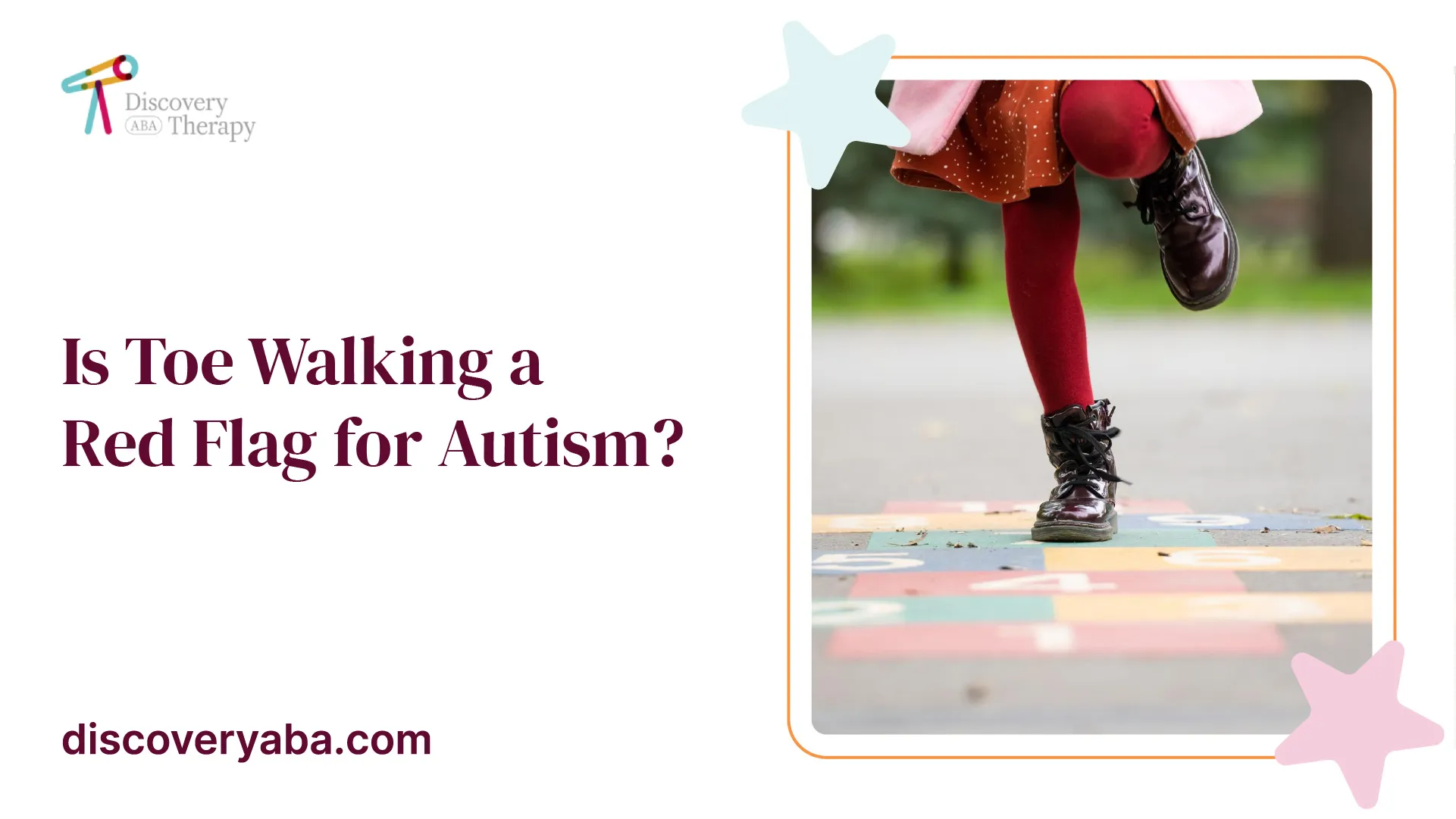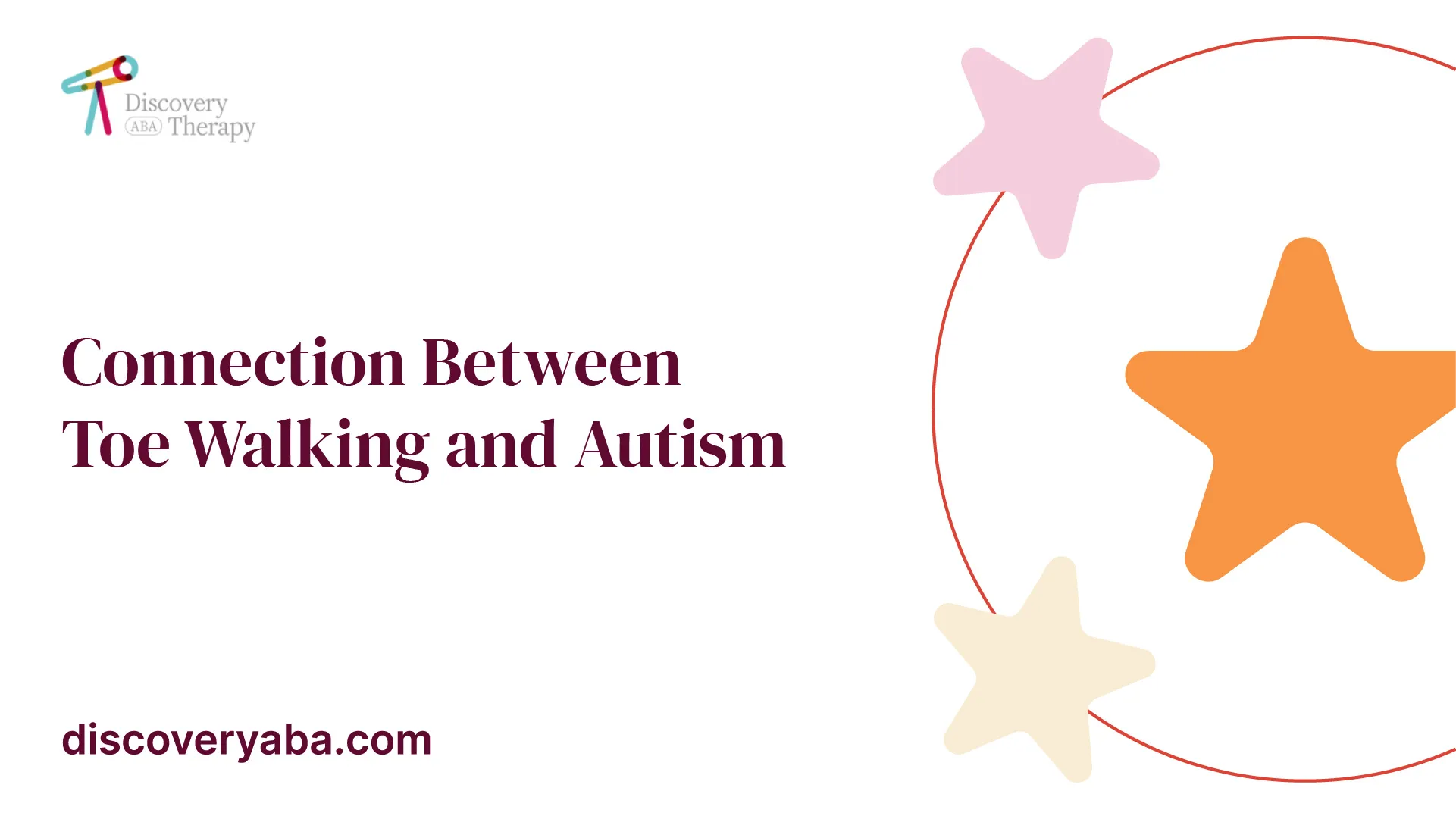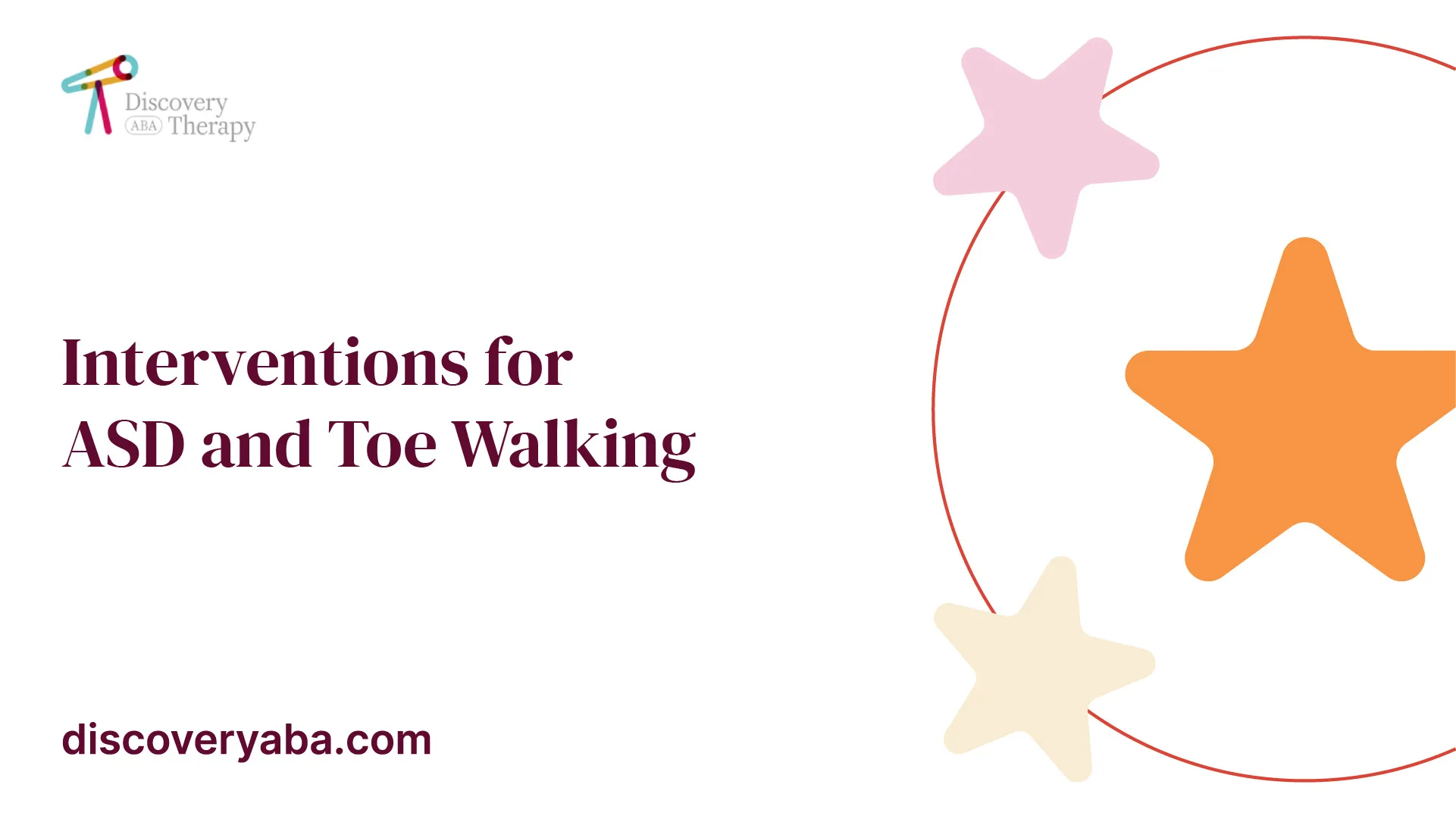Is Toe Walking a Red Flag for Autism?
Is toe walking a sign of autism? Unveiling the connection and exploring the significance. Discover the red flags and interventions for ASD.


Understanding Toe Walking
Toe walking refers to a walking pattern where an individual walks on their tiptoes or the balls of their feet, with little or no contact between the heels and the ground. While toe walking can occur in children and adults for various reasons, it has been observed that toe walking is more prevalent among individuals with Autism Spectrum Disorder (ASD) compared to those without ASD.
Definition and Prevalence
Toe walking is a phenomenon characterized by walking on the toes or the balls of the feet, with the heels not touching the ground [1]. It is important to note that toe walking can have various causes and is not exclusive to autism. Individuals who walk on their toes may have a habit or underlying medical conditions such as cerebral palsy or muscular dystrophy.
However, research suggests that toe walking occurs more frequently in children with ASD compared to those without an autism diagnosis. One large study found that approximately 9% of children on the autism spectrum were toe walkers, whereas less than 0.5% of children without ASD exhibited toe walking behavior. It's important to remember that toe walking alone does not necessarily indicate autism, as there are various reasons for this behavior.
Causes of Toe Walking
Toe walking can stem from a range of factors, including neurological, muscular, and developmental issues. When it comes to autism, toe walking can be observed more frequently in individuals on the spectrum compared to the general population. However, it is essential to note that not all individuals with ASD exhibit toe walking behavior.
The exact cause of toe walking in individuals with autism is still not fully understood. It is believed to be a result of a combination of factors, including sensory processing difficulties and motor skill development. Some individuals with autism may engage in toe walking due to sensory sensitivities or difficulties in coordinating their movements. Toe walking can also be associated with language delays in individuals with ASD.
It is crucial to consult with a healthcare professional if you have concerns about toe walking in yourself or your child, especially if it is accompanied by other symptoms or delays in development. A thorough evaluation can help determine the underlying cause and guide appropriate interventions and support.
As we delve deeper into the connection between toe walking and autism, it is essential to understand the symptoms and characteristics of autism spectrum disorder.
Connection Between Toe Walking and Autism

Understanding the potential connection between toe walking and autism is essential for early identification and intervention. In this section, we will explore the research findings regarding this association and discuss the significance of toe walking in the context of autism.
Research Findings
Research suggests that toe walking can be a sign of autism, particularly when combined with language delays. Studies have indicated that toe walking is more common in children with autism spectrum disorder (ASD) and other neuropsychiatric conditions compared to the general population.
One large study examined the toe-walking data of over 2 million children. Among the 5,739 children diagnosed with ASD, 8.4% (484) were also diagnosed with toe walking. In contrast, only 0.47% of typically-developing children exhibited toe walking [3]. This research highlights the higher prevalence of toe walking in children with ASD.
Significance of Toe Walking in Autism
Toe walking can provide valuable clues when evaluating a child for autism. While toe walking can result from various conditions, including cerebral palsy and muscular dystrophy, it occurs more frequently in children with ASD compared to those without an autism diagnosis. However, it is important to note that not all individuals who walk on their toes have autism, as there are multiple reasons for toe walking [4].
The significance of toe walking in autism lies in its potential as an early indicator of the condition. When observed alongside other symptoms and characteristics of autism, such as language delays or social communication difficulties, toe walking can help healthcare professionals in their diagnostic process. Identifying toe walking as a potential red flag for autism can prompt further evaluation and early intervention for children who may benefit from specialized support and therapies.
It's important to note that not all children with autism exhibit toe walking, and not all toe walkers have autism. However, for children with ASD who do toe walk, the condition may persist over time. A study found that among children who didn't receive intervention, 63.6% of those with ASD continued to toe walk within 10 years of their diagnosis, compared to 19.3% of children without ASD [3]. This highlights the potential long-term impact of toe walking in children with autism.
By understanding the connection between toe walking and autism, parents, caregivers, and healthcare professionals can recognize the importance of monitoring this behavior and its potential significance in the diagnostic process. Early identification and intervention can help provide the necessary support and therapies to improve outcomes for children with autism who exhibit toe walking.
Identifying Autism Spectrum Disorder (ASD)
Understanding the symptoms, characteristics, and the process of diagnosis and screening are essential in identifying Autism Spectrum Disorder (ASD) in individuals.
Symptoms and Characteristics
ASD is a neurodevelopmental disorder characterized by persistent challenges in social interaction, communication, and restricted and repetitive behaviors. The symptoms and characteristics of ASD can vary widely, and they typically manifest during early childhood. Some common signs and behaviors associated with ASD include:
- Difficulty with social interactions, such as maintaining eye contact, understanding nonverbal cues, and forming friendships.
- Delayed or limited speech and language skills, or a tendency to repeat words or phrases (echolalia).
- Repetitive behaviors, such as hand-flapping, rocking, or lining up objects.
- Sensory sensitivities, such as being overly sensitive or under-responsive to certain sounds, textures, or smells.
- Resistance to changes in routines or rituals.
- Intense focus or preoccupation with specific interests or topics.
It's important to note that these symptoms can vary in severity and may present differently in different individuals. Additionally, there can be differences in how symptoms appear in boys and girls. For more information on autism symptoms in girls, refer to our article on autism symptoms in girls.
Diagnosis and Screening
The diagnosis of ASD involves a comprehensive evaluation by healthcare professionals, typically including a developmental pediatrician, psychologist, or psychiatrist. They will assess the child's behavior, communication, social interactions, and developmental milestones. The diagnostic process may involve:
- Developmental Screening: This involves the use of standardized tools to identify potential developmental delays or concerns. Healthcare providers often perform these screenings during regular well-child visits.
- Comprehensive Evaluation: If developmental concerns are identified during the screening process, a more in-depth evaluation is conducted. This evaluation may include direct observations, interviews with parents or caregivers, and assessments of the child's cognitive and language abilities.
- Diagnostic Criteria: The evaluation is based on established diagnostic criteria, such as those outlined in the Diagnostic and Statistical Manual of Mental Disorders (DSM-5) published by the American Psychiatric Association.
It's important to remember that there is currently no medical test, such as a blood test or brain scan, to diagnose ASD. Diagnosis relies on careful observation of behaviors and developmental history. Early detection and intervention are crucial in improving outcomes for individuals with ASD. If you suspect your child may have ASD, it's important to consult with a healthcare professional experienced in diagnosing and treating autism.
Regular screenings for ASD are recommended as part of routine pediatric care, even for children who do not show obvious signs of the disorder. This can help identify potential developmental delays and ensure early intervention. For more information on advocating for your child with autism in school and creating an individualized education program (IEP), refer to our articles on advocating for your child with autism in school and creating an IEP for a child with autism.
In conclusion, recognizing the symptoms and obtaining a timely and accurate diagnosis is crucial for individuals with ASD. Early identification and intervention play a significant role in providing appropriate support and resources to help individuals with ASD thrive.
Interventions for ASD and Toe Walking

When it comes to addressing toe walking in individuals with Autism Spectrum Disorder (ASD), early intervention is crucial. Identifying and addressing the issue early can help prevent long-term complications and improve overall mobility. In this section, we will explore the importance of early treatment and various options and strategies for managing toe walking in individuals with ASD.
Early Treatment Importance
Early intervention plays a significant role in addressing toe walking in individuals with ASD. If left untreated, persistent toe walking can lead to a stiffening of the calf muscles and Achilles tendons, making it more difficult over time to walk with a typical gait. Seeking evaluation and treatment advice from a pediatrician is essential if toe walking persists.
Research has shown that children with ASD and toe walking are more likely to require surgical correction compared to their non-ASD peers. A large database study involving over 2 million children found that those with ASD and toe walking received surgical correction at nearly triple the rate of non-ASD children with toe walking. Additionally, without intervention, a higher percentage of children with ASD continued to toe walk within 10 years of their diagnosis compared to children without ASD.
Treatment Options and Strategies
When it comes to interventions for toe walking in individuals with ASD, several approaches can be considered. It's important to note that the choice of treatment may vary depending on the individual's specific needs and the severity of their toe walking. Here are some common treatment options and strategies:
- Physical Therapy: Physical therapy can play a valuable role in addressing toe walking in individuals with ASD. A physical therapist can develop a personalized exercise program to stretch and strengthen the muscles and tendons involved in walking. Therapy may focus on improving range of motion, balance, and coordination.
- Orthotic Devices: In some cases, orthotic devices such as ankle-foot orthoses (AFOs) may be recommended. AFOs are custom-made braces that provide support and help maintain proper foot alignment during walking. These devices can help encourage a more natural gait pattern and reduce toe walking.
- Sensory Integration Therapy: Toe walking in individuals with ASD may be related to sensory processing issues. Sensory integration therapy aims to address these difficulties by exposing individuals to various sensory stimuli in a controlled and therapeutic environment. This therapy can help improve body awareness, coordination, and motor planning.
- Applied Behavior Analysis (ABA): ABA is a widely used behavioral intervention for individuals with ASD. It focuses on identifying and modifying behaviors through positive reinforcement and systematic teaching. ABA can be used to target and reduce toe walking by reinforcing alternative walking patterns.
- Parent Education and Training: Providing parents with education and training on strategies to address toe walking can be beneficial. Parents can learn techniques to encourage proper walking patterns at home and incorporate exercises and activities into daily routines.
It's important to remember that each individual with ASD is unique, and the effectiveness of interventions may vary. Consulting with healthcare professionals, including pediatricians, physical therapists, and behavioral therapists, can help determine the most appropriate treatment approach for an individual's specific needs.
By addressing toe walking early and implementing appropriate interventions, individuals with ASD can improve their gait, mobility, and overall quality of life. It's essential to develop a comprehensive treatment plan that considers the specific needs of the individual and utilizes a multidisciplinary approach to maximize the benefits of intervention.
Risks and Complications
When it comes to toe walking, there are potential risks and complications to consider, particularly in relation to autism spectrum disorder (ASD). This section explores the long-term effects of persistent toe walking and the management strategies for this behavior.
Long-Term Effects
Persistent toe walking can have long-term effects on an individual's gait and musculoskeletal system. The repetitive nature of walking on tiptoes can lead to a stiffening of the calf muscles and Achilles tendons over time, making it more difficult to walk with a typical gait. It's important to seek evaluation and intervention if toe walking continues, especially if it is associated with other developmental concerns.
A study found that among children with ASD, 63.6% continued to toe walk within 10 years of their diagnosis, compared to 19.3% of children without ASD who exhibited toe walking. This highlights the potential persistence of toe walking in individuals on the autism spectrum [3].
Management of Persistent Toe Walking
Managing persistent toe walking requires a comprehensive approach that addresses the underlying causes and provides appropriate interventions. It's essential to consult with healthcare professionals, such as pediatricians or specialists in developmental disorders, for guidance and support.
The management of persistent toe walking may involve a combination of strategies, including:
- Physical therapy: A physical therapist can assist in developing exercises and stretching routines to improve muscle flexibility and strengthen the lower limbs. These interventions aim to encourage a more typical gait pattern.
- Orthotic devices: In some cases, orthotic devices like ankle-foot orthoses (AFOs) may be recommended. AFOs provide support and help maintain a proper foot alignment, reducing the tendency to walk on tiptoes.
- Behavioral interventions: Behavioral interventions, such as applied behavior analysis (ABA), may be used to address the underlying behavior associated with toe walking. ABA techniques can help individuals learn alternative motor patterns and promote more typical walking patterns.
- Addressing underlying conditions: It's important to consider and address any underlying conditions that may contribute to toe walking, such as cerebral palsy or muscular dystrophy. Treatment for the associated condition can help alleviate the toe walking behavior.
Seeking early intervention is crucial to effectively manage and address persistent toe walking. The appropriate treatment approach will depend on the individual's specific needs and underlying factors contributing to the behavior. Consulting with healthcare professionals, such as pediatricians, physical therapists, and specialists in developmental disorders, can provide valuable guidance and support.
Understanding the connection between persistent toe walking and ASD is important, but it's also essential to recognize that toe walking can have various causes, and autism is not the most likely cause. It's estimated that about one-third of toe walkers may be autistic, meaning that two-thirds of toe walkers will be non-autistic. If you have concerns about toe walking, it's best to consult with a healthcare professional for a thorough evaluation and appropriate guidance.
In the next section, we will explore the diversity in ASD diagnosis, considering factors such as gender, race, and economic backgrounds.
Diversity in ASD Diagnosis
Autism Spectrum Disorder (ASD) does not discriminate and can affect individuals of all genders, races, ethnicities, and economic backgrounds. While the symptoms and characteristics of ASD are similar across different populations, there are notable differences in the diagnosis and prevalence of ASD among various groups. This section explores the impact of gender, race, and economic backgrounds on ASD diagnosis and provides recommendations for screenings.
Gender, Race, and Economic Backgrounds
ASD diagnosis and prevalence can vary based on gender, race, and economic backgrounds. Research indicates that autism is more commonly diagnosed in boys and children assigned male at birth (AMAB) than in girls and children assigned female at birth (AFAB). According to the Centers for Disease Control and Prevention (CDC), ASD is more than four times more common in boys and children AMAB than in girls and children AFAB [5].
Moreover, studies have found that autism is often overlooked in Black children, particularly Black girls, who tend to be diagnosed later than their White counterparts. There is a higher incidence of ASD in Black children compared to White children [6]. These disparities highlight the need for increased awareness, early intervention, and culturally sensitive approaches to autism diagnosis and support.
Economic backgrounds can also influence access to diagnostic services and interventions. Children from lower-income families may face barriers in obtaining timely and accurate ASD diagnoses, leading to delayed intervention and support. It is important to address these disparities and ensure that individuals from all economic backgrounds have equal access to assessments, screenings, and appropriate interventions.
Recommendations for Screenings
To address the diversity in ASD diagnosis and improve early identification, the American Academy of Pediatrics recommends that all children receive screening for autism. Early detection and intervention can significantly impact outcomes for individuals with ASD, allowing for timely support and access to appropriate services.
Screenings should be conducted at regular intervals during well-child visits, starting as early as 18 months of age. Healthcare providers, educators, and caregivers should be vigilant in monitoring developmental milestones and any signs of ASD. Recognizing the importance of early identification, it is crucial to advocate for comprehensive and accessible screenings for all children, regardless of gender, race, or economic background.
By promoting awareness, providing culturally sensitive care, and implementing inclusive screening practices, we can strive for equitable access to ASD diagnosis and support. It is essential to ensure that all individuals, regardless of their background, receive the necessary resources and interventions to thrive and reach their full potential. For more information on autism and early childhood interventions, refer to our article on early childhood education for autism.
References
Does Your Child Have An Autism Diagnosis?
Learn More About How ABA Therapy Can Help
Find More Articles
Contact us
North Carolina, Nevada, Utah, Virginia
New Hampshire, Maine
Arizona, Colorado, Georgia, New Mexico, Oklahoma, Texas
.avif)




































































































